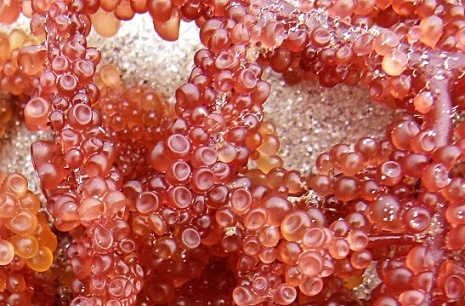Taiwanese Scientists Discover Beneficial Properties of Red Algae for Scar Prevention and Skin Regeneration
Nikhil Prasad Fact checked by:Thailand Medical News Team Dec 07, 2024 4 months, 5 days, 23 hours, 19 minutes ago
Medical News: Introduction to a Marine Miracle
A groundbreaking study by researchers from various esteemed institutions in Taiwan has shed light on the extraordinary potential of Botryocladia leptopoda, a red macroalga, in enhancing skin health. This seaweed, found along the coasts of Taiwan, is rich in bioactive compounds that offer significant antioxidant, anti-inflammatory, and skin-regenerative properties. With its ability to shield the skin from UV damage, stimulate collagen production, and promote fibroblast proliferation, this humble algae may soon become a staple in skincare and therapeutic applications.
 Taiwanese Scientists Discover Beneficial Properties of Red Algae for Scar Prevention and Skin Regeneration
Taiwanese Scientists Discover Beneficial Properties of Red Algae for Scar Prevention and Skin Regeneration
The research team included experts from the National Taiwan University, Taipei Medical University, National Kaohsiung University of Science and Technology, and the Fisheries Research Institute under the Ministry of Agriculture. This
Medical News report will explore their findings, focusing on how extracts of this alga can transform approaches to scar inhibition, skin repair, and pigmentation management.
The Study and Its Approach
The researchers extracted bioactive compounds from Botryocladia leptopoda using ethanol and an alkaline solution to create two types of extracts - ethanol extract (FE) and alkaline extract (AE). These extracts were tested on human skin cells to assess their ability to combat damage from UVB radiation, stimulate collagen production, and reduce oxidative stress. The components of each extract were analyzed using advanced techniques like mass spectrometry.
Key Findings on Skin Health
Superior UV Protection and Oxidative Stress Reduction
The FE extract emerged as a strong contender against UVB-induced skin damage, absorbing harmful UVB rays and reducing oxidative stress. It decreased reactive oxygen species (ROS) levels by 21.4%, while the AE extract achieved a slightly lower reduction of 19.7%. This capability makes FE particularly promising for sun-protective formulations.
-Enhancing Collagen Synthesis
Collagen, a vital protein for skin elasticity and repair, is often diminished under UV damage. FE showed remarkable efficacy in restoring collagen synthesis, achieving a 113% increase in procollagen type I levels at optimal doses. In contrast, AE displayed limited impact on collagen production, emphasizing its focus on other skin benefits like pigmentation control.
-Managing Scars and Fibroblast Activity
Scars form when fibroblasts produce excessive collagen during the healing process. Both extracts inhibited this overactivity, with FE reducing fibroblast proliferation by 12.2% and AE by 2.1%. The extracts also downregulated fibrosis-associated markers such as Smad2 and α-SMA, with FE demonstrating superior efficacy in mitigating these pathways.
-Addressing Pigmentation Issues
Melanin, th
e pigment responsible for skin color, can sometimes accumulate excessively, leading to conditions like hyperpigmentation. Both extracts showed promising results in reducing melanin production, with inhibition rates of approximately 61% for FE and 60% for AE at low concentrations. AE’s higher content of phenylalanine betaine, a compound known for its anti-melanogenic properties, makes it particularly effective in pigmentation management.
Implications for Skincare and Therapeutic Use
The study underscores the potential of Botryocladia leptopoda in developing advanced dermatological products. FE, with its potent anti-inflammatory and collagen-boosting properties, is ideal for scar prevention and anti-aging treatments. Meanwhile, AE’s strengths in tissue repair and pigmentation control suggest its utility in products aimed at skin restoration and brightening.
Conclusions
The findings of this research highlight the versatility and effectiveness of Botryocladia leptopoda extracts in addressing various skin health challenges. The ethanol extract (FE) stands out as a powerful solution for reducing scarring and enhancing skin repair, while the alkaline extract (AE) shines in promoting cellular growth and managing pigmentation. Together, these extracts represent a dual approach to comprehensive skin health.
As the study suggests, future efforts could explore combining these extracts to leverage their complementary properties for even greater benefits. This research opens the door to innovative, nature-inspired solutions in skincare and wound healing.
The study findings were published in the peer-reviewed journal: Molecules.
https://www.mdpi.com/1420-3049/29/23/5688
For the latest on Aesthetics sand Dermatology, keep on logging to Thailand
Medical News.
Read Also:
https://www.thailandmedical.news/news/quercitrin-from-green-ball-apples-and-its-protective-role-against-skin-aging
https://www.thailandmedical.news/news/how-skin-color-can-influence-drug-efficacy-new-insights-into-medication-response
